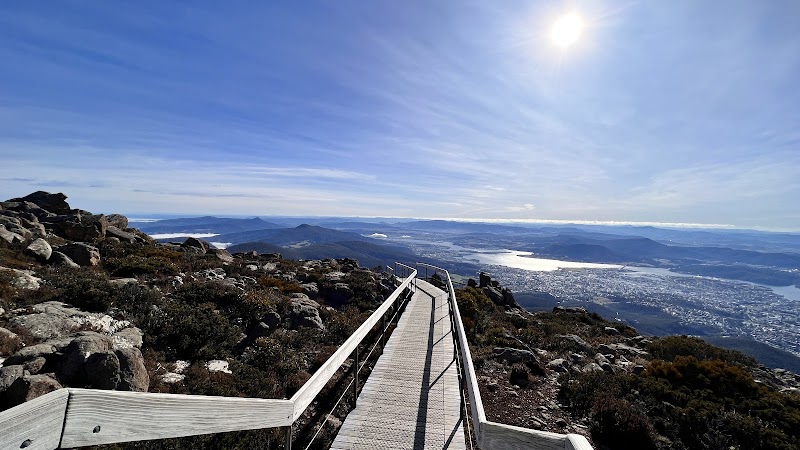Encountering Wildlife Near Hobart: Your Practical Guide to Tasmania’s Wilderness
Discover the vibrant wildlife surrounding Hobart, where native species roam freely in accessible natural reserves and parks. This guide offers keen insights and practical tips for planning your outdoor wildlife adventure in Tasmania’s captivating landscapes.
Choose Early Morning or Late Afternoon for Wildlife Viewing
Animals are most active during cooler hours; plan hikes to coincide with these periods for better spotting chances.
Wear Durable Hiking Footwear
Expect uneven trails with roots and rocks in parks like Mount Field and South Arm Peninsula.
Carry Binoculars and a Field Guide
Many species stay hidden or at a distance; optics and reference materials enhance observation and identification.
Respect Wildlife Habitats
Keep to paths and avoid disturbing animals to support conservation efforts and ensure your safety.
Encountering Wildlife Near Hobart: Your Practical Guide to Tasmania’s Wilderness
Explore the rich wildlife near Hobart, Tasmania’s gateway to Southern wilderness alive with unique animals and rugged landscapes. This region offers accessible encounters with native species such as eastern quolls, Tasmanian devils, and countless bird varieties, making it a prime destination for wildlife enthusiasts and outdoor adventurers. Set against varied terrain from bushland to coastal reserves, Hobart’s wildlife experiences combine the thrill of discovery with practical opportunities to see animals in their natural habitats.
Key wildlife hotspots near Hobart include Mount Field National Park, where towering eucalyptus trees create shelter for pademelons and crimson rosellas, and the Bonorong Wildlife Sanctuary, focused on the conservation and rehabilitation of native animals like wombats and Tasmanian devils. For those prepared to walk varied terrain, the South Arm Peninsula offers coastal trails with sea eagle sightings and beachcombing for fur seals basking on rocky shores.
Wildlife near Hobart is shaped by the region’s temperate climate, with species active throughout the year. Spotting chances improve during early morning or late afternoon when animals emerge to forage, and well-placed hides or guided tours increase opportunities to observe without disturbance.
To experience wildlife responsibly, wear sturdy footwear for uneven paths, carry binoculars for distance viewing, and pack water for hydration on longer treks. Avoid feeding animals to maintain natural behavior patterns and always follow local guidelines designed to protect fragile ecosystems.
Harness Hobart as your base for accessible trips that combine riveting wildlife interaction, scenic hiking, and cultural insights. Whether you’re a casual nature lover or a dedicated wildlife photographer, this area delivers encounters that educate and inspire.
Nearby Trips
All Adventures
Boat Charters
Water Activities
Adventures near Hobart
Discover the unique and memorable adventures that make Hobart special.
Frequently Asked Questions
What are the best spots near Hobart to see Tasmanian devils?
Bonorong Wildlife Sanctuary is the top location to see Tasmanian devils up close in a conservation setting. For wild sightings, dusk at forested reserves like Mount Wellington increases chances, but encounters remain rare and require patience and silence.
Are guided wildlife tours available around Hobart?
Yes, several local businesses offer guided walking and vehicle tours focusing on native animals, combined with ecological education. Booking in advance is recommended during peak tourist seasons.
What precautions should I take when hiking for wildlife viewing?
Stick to marked trails to protect sensitive habitats, maintain a respectful distance from animals, avoid loud noises, and never feed wildlife. Prepare for variable weather by wearing layers and packing rain protection.
Can I see marine wildlife near Hobart as part of a terrestrial trip?
Coastal areas such as the South Arm Peninsula provide opportunities to observe fur seals, sea birds, and occasionally dolphins close to shore. Combining beach walks with bush trails enriches your wildlife experience.
What time of day is best for photography of wildlife near Hobart?
Early morning and late afternoon offer soft, directional light ideal for capturing animals active during these cooler periods, alongside spectacular landscape colors.
Are dogs allowed in wildlife reserves near Hobart?
Dogs are generally prohibited in national parks and wildlife sanctuaries to prevent stress and disturbance to native animals. Always check local regulations before bringing pets.
Recommended Gear
Sturdy Hiking Boots
Protects feet and ankles over rocks, roots, and uneven ground common in Hobart’s wildlife parks.
Lightweight Waterproof Jacket
Tasmania’s weather can shift suddenly; this is critical to stay dry and comfortable.
Compact Binoculars
Essential for spotting shy or distant wildlife safely.
Water Bottle or Hydration Pack
Staying hydrated is key, especially in warmer months during longer hikes.
Local Insights
Hidden Gems
- "Kunanyi/Mount Wellington’s less frequented trails for wallaby sightings"
- "Beltana Beach’s tide pools where curious shorebirds gather"
Wildlife
- "Eastern Quolls, an elusive carnivorous marsupial, best spotted around dusk"
- "Green Rosellas, Tasmania’s native parrots with striking plumage"
- "Spotted-tailed Quolls active in dense forest patches near Hobart"
History
"The area’s connection to Aboriginal Palawa culture enriches the understanding of landscape and wildlife through traditional custodianship, particularly in places like kunanyi and surrounding forested areas."
